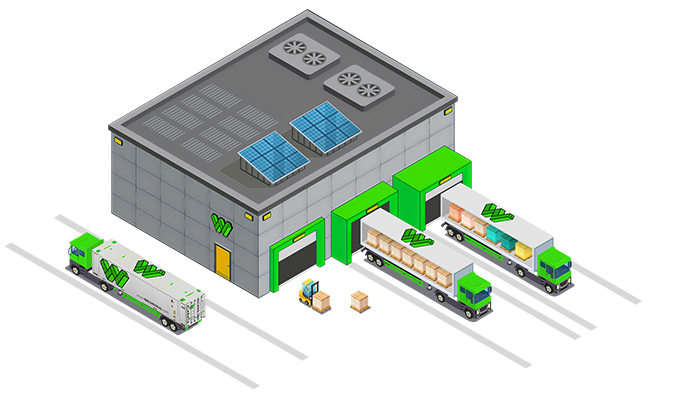Calculate loading meters (LDM) for your cargo to optimize truck space utilization and estimate shipping costs accurately.
Calculate loading meters (LDM) for efficient truck loading
Loading meters (LDM) represent the floor length occupied in a truck. The formula is based on how cargo is arranged across the width of the truck.
For items not on pallets:
Where Rows = ceil(Quantity ÷ (TruckWidth ÷ ItemWidth))
For items on pallets:
Using Euro pallet dimensions (120×80 cm) as minimum
10 standard Euro pallets (120×80 cm)
3 large crates (200×100 cm) + 4 pallets (120×80 cm)
Loading meters are used by carriers to calculate freight costs in road transportation. It helps determine how much space your shipment occupies in a truck, allowing for efficient planning and cost calculation.
In a standard truck with a width of 2.40m, you can fit 2 Euro pallets (120×80 cm) side by side. Therefore, 1 LDM can accommodate 2 Euro pallets.
Stackable cargo affects the volume calculation but not necessarily the LDM calculation, which is based on floor space. However, stackability can influence overall shipping efficiency and potentially reduce costs.
This calculator provides a good estimation based on standard truck dimensions and optimal loading arrangements. In practice, factors like weight distribution, cargo securing, and specific carrier requirements might influence the final LDM.
Loading Meter (LDM) is a critical unit of measurement in road freight that determines how much floor space your shipment occupies in a truck. It directly impacts:

Plan your shipments more effectively by understanding exactly how much truck space you need. This allows for better consolidation of goods and optimized routes.
Get accurate cost estimates before shipping by calculating the precise loading meters required. This helps in budgeting and comparing different logistics providers.
Rearrange your cargo dimensions and quantities to minimize the required loading meters, potentially reducing your shipping costs significantly.
The way your cargo is arranged can significantly impact the loading meters required:
Your packaging choices can affect loading efficiency:
Our team of logistics experts can help you optimize your cargo transportation and find the most cost-effective shipping solutions for your business.